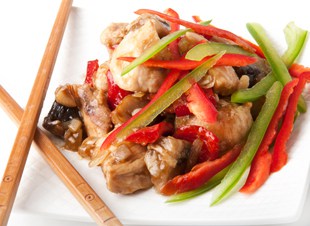Maintaining Our Nutrition While Cutting Calories as We Age
In the human body, excess calories are converted into fat and by limiting our energy intake; we can help to slow aging, not least by avoiding becoming overweight. In any successful diet, there must be a way to control calories, while maintaining a nutritionally-rich intake of vitamins, minerals, antioxidants and other valuable elements.
One trick is to try to exchange your intake of foods that are essentially concentrated calories (so-called ‘energy-dense’ foods) for foods that have fewer calories, yet just as many nutrients. The goal is to make excess calories harder to obtain, so every mouthful contains less energy. Typical energy-dense foods are often dry (e.g. chips, biscuits, confectionery, cereals), although soft drinks and fruit drinks are notable exceptions to this rule. Fat is also twice as energy-dense as sugar or protein, so the same amount of fat counts twice as much towards weight gain. Even a small quantity of food rich in fat, like a piece of cheese, has higher energy content when compared to the same size of grapes.
Eat Less Energy-Dense Foods
We can reduce our calorie intake simply by substituting foods that are less energy-dense. It is possible to eat the same volume of food and yet consume significantly less calories. Less energy-dense foods are generally low-fat and rich in fiber and water, such as fresh fruit and non-starchy vegetables or soups. Many of these foods can be served in portion sizes that still make us feel full, while adding less to energy accrual. We might think that eating low-energy foods would just make us hungrier, but this is not true. If we reduce the energy density of your food by 25%, we reduce our energy intake by a similar amount. As a result, adults who regularly eat fruit, vegetables and other foods with reduced energy density have a lower risk of weight gain as they age.
Limit Your Access to Foods Loaded With Calories
Another trick is to limit access. Sometimes we eat simply because food is there! This does not mean having a house devoid of food, it means ensuring it is easier to access fruit and harder to get to the ice cream, sweets, biscuits and chips. Plan our environment and make it easier for us and our families to get into good habits.
Another way to get the most out of low-energy food is to eat a portion of soup or salad as a first course to enhance satisfaction and reduce overeating during the rest of the meal. But a word of caution – the ingredients matter. Once calories start being added (some cheese, bread and egg, etc), the energy content of a first course can quickly climb.
Nowadays most food labels list energy density (measured as kJ/g), along with other nutrient contents. For example, the energy in a packet of nacho chips is around 2,000 kj/100g (almost the same as butter – and we’d never eat 100g of butter in one sitting!), while most fruit and vegetables are less that 400 kj/100g. When we’re starting out, don’t radically change our diet. Just take the time to read the labels and choose ones that have low density.







